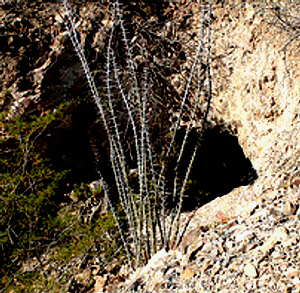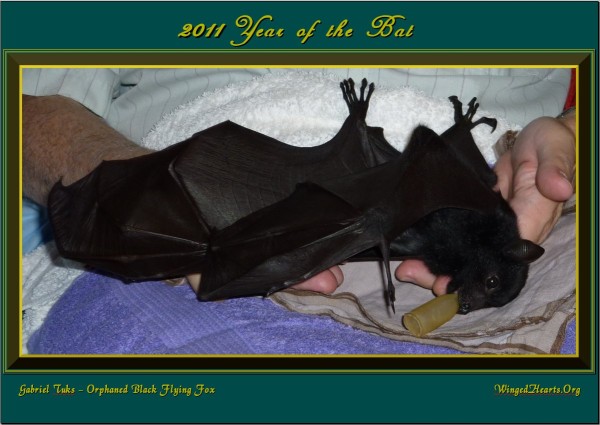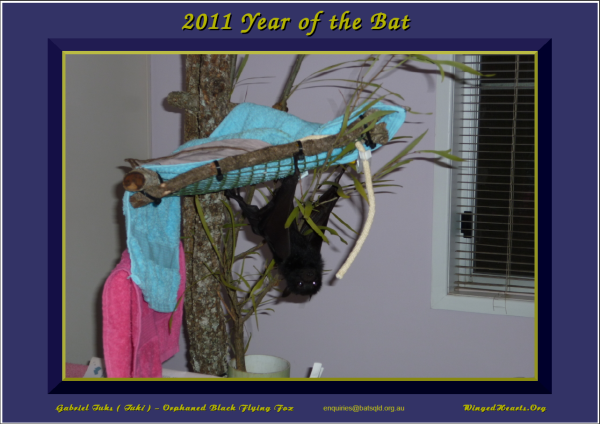Submitted by Gitie on 4 March, 2012 - 22:53
2012 sees the continuation of the Year of the Bat.
 Abandoned mines although unsuitable for human use can provide much needed habitat for bats and wildlife. In the United States alone there are over 48,000 abandoned mines. Abandoned mines are like caves and non-destructive mine closures are those where features such as bat gates, cupolas and other preservation tools have been installed to help bats (or other wildlife depending on the location) use the mines for refuge.
Abandoned mines although unsuitable for human use can provide much needed habitat for bats and wildlife. In the United States alone there are over 48,000 abandoned mines. Abandoned mines are like caves and non-destructive mine closures are those where features such as bat gates, cupolas and other preservation tools have been installed to help bats (or other wildlife depending on the location) use the mines for refuge.
Bat Conservation International and the US Bureau of Land Management have combined their efforts to create a guide that helps determine the best closure type for mine openings. On their dedicated site http://www.batgating.com they provide a wealth of information as well a decision matrix tool to help land managers and conservation groups evaluate a closed land mine, or a mine targeted for closure and determine the most suitable mine opening. There is also a wealth of information on closure types, materials, considerations, and other expert material.
Such re-purposing is great news for bats and other wildlife and hopefully a turning point as more unusable mines are converted to help conservation efforts across the globe.

Submitted by Gitie on 6 October, 2011 - 15:36
 The recent outbreak of the potentially deadly hendra virus is a cause of great concern to horse breeders and farmers alike. According to the Department of Primary Industries, although the virus can be transmitted from horses to humans, found in bats, there is no evidence that it can be transmitted directly to humans. Flying foxes are critical to the environment and a protected species. Culling is not only cruel but also ineffective. (Ref: Flying Foxes and Hendra Virus; The role of flying foxes in Hendra virus)
The recent outbreak of the potentially deadly hendra virus is a cause of great concern to horse breeders and farmers alike. According to the Department of Primary Industries, although the virus can be transmitted from horses to humans, found in bats, there is no evidence that it can be transmitted directly to humans. Flying foxes are critical to the environment and a protected species. Culling is not only cruel but also ineffective. (Ref: Flying Foxes and Hendra Virus; The role of flying foxes in Hendra virus)
There are many effective steps people can take in reducing the risk of horses and people getting infected. See:
Reducing the Risk of Hendra Infection in Horses
Reducing the Risk of Hendra Infection in People
Flying foxes are the only flying mammals and perform the quintessential task of pollinating and dispersing seeds of many native plants. Many trees especially those with white and green fruits rely only on flying foxes for pollination and dispersal of seeds. Losing our flying foxes would also mean losing a vast range of our native plants.
Flying foxes are also responsible for nutrient regeneration and nutrient cycling within the ecosystem, (Ref: Living With Wildlife) by providing large quantities of natural fertiliser across the landscape. They also create gaps in canopies enabling ground- dwelling plants to get more sunlight and rain.

Submitted by Gitie on 19 August, 2011 - 15:34
Submitted by Gitie on 1 April, 2011 - 16:11

( click here for for Year of The Bat Posters (free) )
Bat Physiology Facts
(Courtesy Batsqld.org.au and Long Grass Wildlife Refuge)

Flying foxes and Microbats are placental mammals
They are warm blooded and deliver a furred open-eyed baby and suckle their young
The baby has oversized feet and an extra hook on the thumb hook to aid in clinging to its mother
By latching on to the mothers teat located in the wing pit the baby is carried very securely for the first five weeks of its life
From 3-5 weeks the baby cannot thermo regulate
Bats mothers are meticulous in hygiene and use their tongue to lick and groom the baby
Baby bats CANNOT fly until they are 12-13 weeks old. Many calls for rescue come after a baby has been seen for days and this seriously affects its survival.

Pages

 Abandoned mines although unsuitable for human use can provide much needed habitat for bats and wildlife. In the United States alone there are over 48,000 abandoned mines. Abandoned mines are like caves and non-destructive mine closures are those where features such as bat gates, cupolas and other preservation tools have been installed to help bats (or other wildlife depending on the location) use the mines for refuge.
Abandoned mines although unsuitable for human use can provide much needed habitat for bats and wildlife. In the United States alone there are over 48,000 abandoned mines. Abandoned mines are like caves and non-destructive mine closures are those where features such as bat gates, cupolas and other preservation tools have been installed to help bats (or other wildlife depending on the location) use the mines for refuge. T
T







